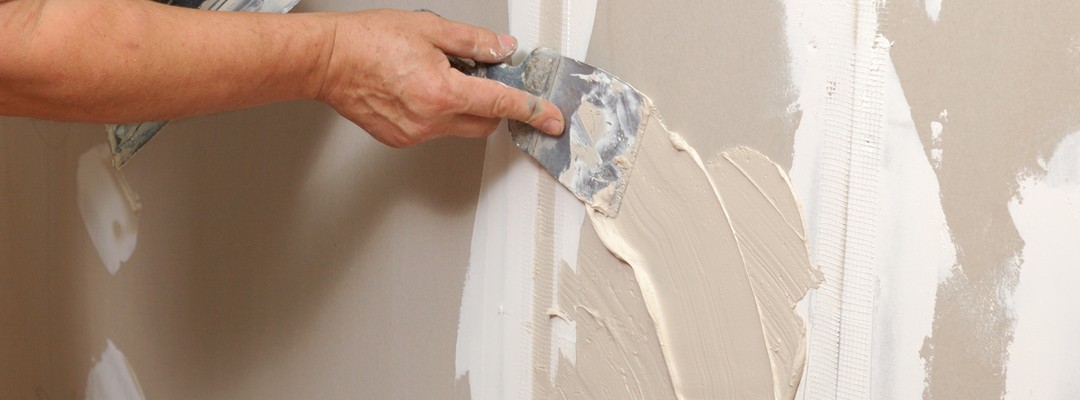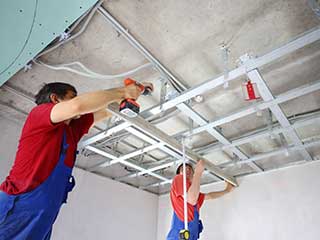Transform your home professionally with Drywall Installation Ogden Utah and modern painting finishes.
Discover the most effective Practices for Successful Drywall Repair and Setup
The art of drywall fixing and installation requires a blend of ability and precision. Understanding the vital tools is vital for achieving a seamless finish. Recognizing the step-by-step process can make a considerable difference in the final outcome. Correct techniques for taping and mudding are also crucial. What stays is the understanding of maintenance that assures durability. These components with each other produce a refined outcome worth discovering further.

Crucial Devices for Drywall Repair Work and Installation
When embarking on drywall repair and installation, having the right tools can significantly boost the effectiveness and high quality of the job. An energy blade is necessary for cutting drywall sheets specifically, while a drywall saw can help in making much more intricate cuts. Taping blades, readily available in different sizes, are important for using joint substance smoothly and evenly. A drywall sander, ideally with a dirt collection function, aids accomplish a sleek finish, lowering the requirement for comprehensive clean-up.
Additionally, a determining tape guarantees accurate dimensions, and a degree makes sure that installments are straight and plumb. Safety and security gear, including dirt masks and goggles, should not be neglected to safeguard against particles and dirt. A stud finder help in finding framing participants, guaranteeing safe installment. By furnishing oneself with these vital devices, the repair work and setup process ends up being much more manageable and results in a professional-quality end result.

Step-by-Step Guide to Patching Holes
Covering openings in drywall calls for a systematic strategy to assure a seamless fixing. Initially, the location around the hole need to be cleaned up and any type of loose particles removed. For tiny holes, a putty blade can be used to use a lightweight spackle, pushing it right into the opening and smoothing the surface. After it dries out, fining sand is important to produce a flat finish. For larger openings, a patch of drywall might be necessary. This involves cutting a piece of drywall somewhat bigger than the opening, protecting it to the wall surface with screws, and making use of joint compound to cover the seams. Once the compound dries out, it should be fined sand smooth. Finally, topping the patched location before paint will certainly ensure an even surface. Adhering to these actions will result in a professional-looking fixing that blends seamlessly with the surrounding wall surface.
Techniques for Seamless Drywall Installment
Achieving seamless drywall installment needs careful planning and implementation. It is important to determine and reduce drywall sheets properly to decrease voids. Using an utility blade, installers ought to score the board prior to snapping it along the cut line, ensuring tidy edges. Effectively lining up the sheets is essential; beginning with the top and working down assists maintain harmony.
Securing drywall to the studs needs consistent spacing, generally every 16 inches, making use of screws instead of nails for much better hold. This method minimizes the risk of stands out with time. Additionally, staggering the joints between sheets improves structural integrity and lowers the exposure of joints.
Making use of the best density of drywall for certain areas-- such as moisture-resistant kinds in shower rooms-- further adds to a perfect finish. Complying with these strategies will result in a professional-looking and smooth installment, establishing the stage for the subsequent ending up procedures.
Completing Touches: Insulation and Mudding
Completing touches, such as mudding and taping, play a vital role in accomplishing a refined drywall surface area. Taping involves using a slim strip of drywall tape over the joints and joints, making certain a seamless look. This procedure helps protect against fractures and creates a solid bond in between drywall sheets. It is vital to choose the best kind of tape, with paper and fiberglass fit together being the most typical alternatives.
Mudding, or using joint compound, follows taping. This compound fills up in gaps and smooths out the surface for a consistent surface. It is commonly applied in multiple layers, with each layer needing to completely dry before sanding. Appropriate strategy entails feathering the sides to mix the compound into the surrounding drywall, minimizing presence.
When completed properly, taping and mudding boost both the aesthetic and architectural stability of the drywall setup, resulting in a professional-quality finish.
Tips for Maintaining Your Drywall After Installment

Additionally, preserving a constant interior humidity degree can protect against bending or mold development. Using a dehumidifier in damp areas, like basements, is advisable. It's also useful to regularly repaint locations that reveal wear, as this secures the more info underlying product. Finally, when relocating furniture or mounting components, caution must be exercised to stay clear of damaging the drywall. By complying with these upkeep pointers, property owners can extend the life of their drywall, protecting it stays an attractive function of their interiors.
Often Asked Questions
What Safety Equipment Is Essential for Drywall Fixing and Installment?
For drywall repair work and setup, crucial security equipment includes safety goggles to shield eyes, dust masks to avoid inhalation of bits, handwear covers for hand security, and knee pads for convenience during extended kneeling. drywall contractor.
Exactly how Do I Determine the Drywall Thickness Needed for My Job?
To identify the drywall density needed for a job, one need to think about the wall surface's structural requirements, regional building regulations, and the planned usage of the room, typically choosing 5/8-inch or 1/2-inch drywall.
Can I Repair Drywall Without Removing Furniture From the Room?
Yes, drywall can be repaired without eliminating furnishings from the area. Mindful planning and safety steps can reduce mess, enabling efficient fixings while keeping bordering things safe from dust and damage during the process.
What Types of Drywall Are Finest for Different Environments?
Moisture-resistant drywall is perfect for restrooms and kitchens, while soundproof drywall fits shared walls in homes. Fire-rated drywall is best for garages, and basic drywall functions well generally living areas, making sure durability and suitability for numerous atmospheres.
The length of time Does It Consider Drywall Mud to Dry Completely?
Drywall mud normally takes 24 to 48 hours to completely dry totally, relying on factors like humidity and temperature level (Drywall Installation Ogden Utah). Thicker applications might need longer drying out times, while thinner layers can dry a lot more swiftly. Correct air flow help drying out
The art of drywall repair and setup needs a mix of ability and accuracy. When carrying out drywall repair and installment, having the right devices can greatly enhance the effectiveness and quality of the work. An energy blade is vital for reducing drywall sheets specifically, while a drywall saw can assist in making a lot more intricate cuts. Accomplishing seamless drywall installation demands mindful preparation and execution. Moisture-resistant drywall is ideal for bathrooms and kitchens, while soundproof drywall fits shared walls in houses.